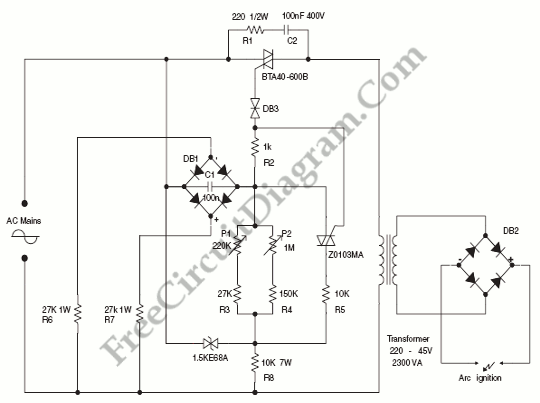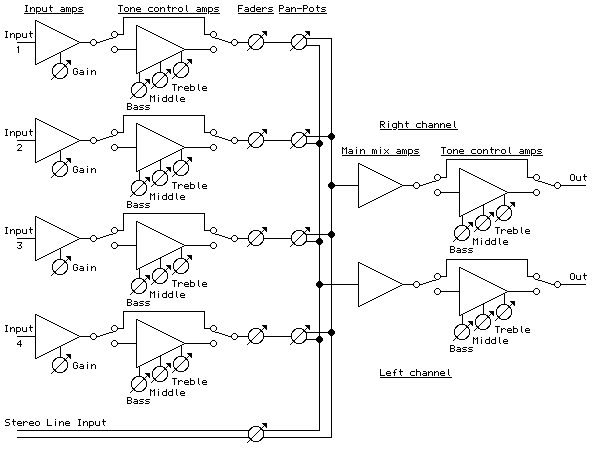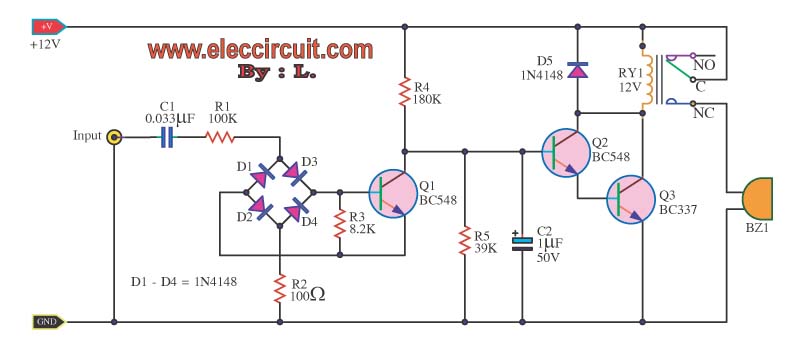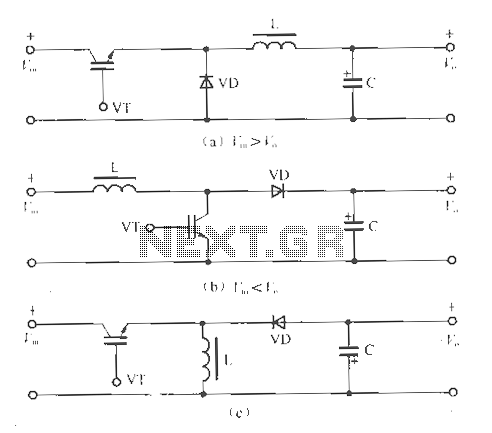
Remote Controlled Appliance Switch Circuit
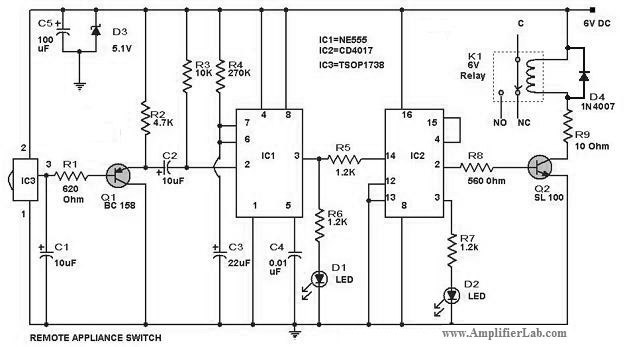
The circuit diagram of a remote-controlled appliance switch circuit includes two main components: IC1 (NE 555) and IC2 (CD 4017).
The remote-controlled appliance switch circuit is designed to allow users to control electrical appliances wirelessly. The heart of this circuit is the NE 555 timer (IC1), which is configured in a monostable mode. This configuration enables the circuit to produce a single output pulse in response to a trigger signal. The output from the NE 555 timer can be used to activate other components in the circuit.
The CD 4017 (IC2) is a decade counter that serves as a secondary component in this circuit. It counts the pulses from the NE 555 timer and can control multiple outputs. This allows for the switching of various appliances based on the number of pulses received. The outputs of the CD 4017 can be connected to relay modules, which in turn control the power to the appliances.
The circuit typically includes additional components such as resistors, capacitors, and diodes to ensure proper functioning and to protect against voltage spikes. The NE 555 timer requires a stable power supply, and decoupling capacitors may be added to filter any noise on the power lines.
The remote control aspect of the circuit can be achieved through the use of an infrared (IR) transmitter and receiver, which can send the trigger signal to the NE 555 timer. The user can activate the appliance by pressing buttons on the remote control, which sends a command to the circuit, causing the NE 555 to generate a pulse and trigger the CD 4017.
This design allows for flexibility in controlling various appliances from a distance, making it suitable for home automation applications. The circuit can be expanded by adding more output devices or integrating it with other control systems, further enhancing its functionality in a smart home environment.Here is the circuit diagram of remote controlled appliance switch circuit. The main parts of this circuit are IC1 (NE 555), IC2 (CD 4017). 🔗 External reference
The remote-controlled appliance switch circuit is designed to allow users to control electrical appliances wirelessly. The heart of this circuit is the NE 555 timer (IC1), which is configured in a monostable mode. This configuration enables the circuit to produce a single output pulse in response to a trigger signal. The output from the NE 555 timer can be used to activate other components in the circuit.
The CD 4017 (IC2) is a decade counter that serves as a secondary component in this circuit. It counts the pulses from the NE 555 timer and can control multiple outputs. This allows for the switching of various appliances based on the number of pulses received. The outputs of the CD 4017 can be connected to relay modules, which in turn control the power to the appliances.
The circuit typically includes additional components such as resistors, capacitors, and diodes to ensure proper functioning and to protect against voltage spikes. The NE 555 timer requires a stable power supply, and decoupling capacitors may be added to filter any noise on the power lines.
The remote control aspect of the circuit can be achieved through the use of an infrared (IR) transmitter and receiver, which can send the trigger signal to the NE 555 timer. The user can activate the appliance by pressing buttons on the remote control, which sends a command to the circuit, causing the NE 555 to generate a pulse and trigger the CD 4017.
This design allows for flexibility in controlling various appliances from a distance, making it suitable for home automation applications. The circuit can be expanded by adding more output devices or integrating it with other control systems, further enhancing its functionality in a smart home environment.Here is the circuit diagram of remote controlled appliance switch circuit. The main parts of this circuit are IC1 (NE 555), IC2 (CD 4017). 🔗 External reference

